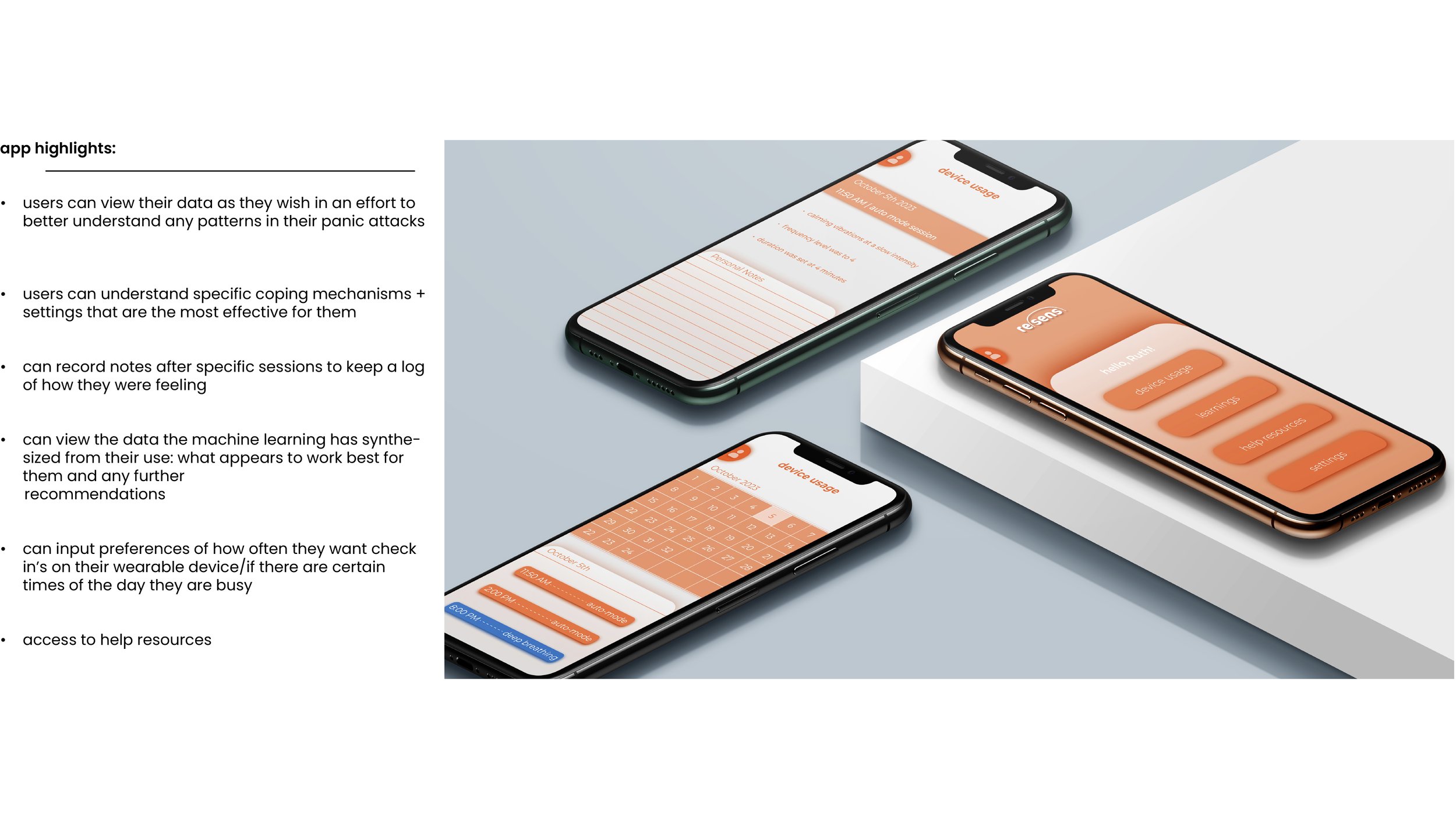re sens | thesis project
a sensory engaging + portable system designed to help young adults calm down from panic attacks
the reality of anxiety
The rate of mental health problems, specifically anxiety, has steadily increased over the years. As young adults are going through a developmental time period in their lives, the age of onset for lifetime mental health problems directly coincides with college years.
initial research process
problem statement
concept framing
what products and systems currently exist?
There is an opportunity for the system to combine physical + digital elements with both high tech and low tech elements. This aims to provide a holistic multi-sensory experience while utilizing tech in a non-obtrusive way.
system design goals
coping mechanisms targeted towards sight, touch, and sound
how can these be integrated into the sensory device in order to help calm down the user?
how might we incorporate an adaptable and individualized component to this?
incorporating machine learning
In order to provide the best individual feedback to the user, I will be incorporating machine learning into the wearable device and sensory device. High level, It will flow something like this..
service blueprint
information architecture | wearable device
information architecture | sensory device
concept development
initial exploration
Initial ideation to explore the sizes and shapes of the devices in relation to the hands and wrist.
understanding the necessary tech components | sensory device
In order to make sure the form factors were proportionally correct to the internal components, it was important to know what would need to be included in the housing.
understanding the necessary tech components | wearable device
validation: phase 1
concept grounding, initial form testing
consumer interviews
7 in depth interviews were completed where users were first grounded in the concept, then gave interactive feedback in regards to the overall concept, ergonomics, and aesthetics via the online platform, Miro. Each section was temporarily hidden in order to prevent bias. Prototypes were shown in person.
summary of learnings
validation: phase 2
refined physical form + cmf
CAD mockups for 3D prints
Initial CAD mockups for the sensory device form as well as the wearable device interface were made. These explore a wide variety of shapes and sizes in order to further test on.
testing models with physical printed interface
human factors analysis
Asking users to pick their favorite forms as well as any likes and dislikes for the sensory device and the wearable device.
final design considerations | sensory device
final design considerations | wearable device
inspirational board | physical product color
Taking inspiration from the 24/25 product color forecast on WGSN, this palette combines a combination of warm mid tones balanced with neutrals and pastels that help to evoke a sense of calm.
inspirational board | digital interface color
Taking inspiration from the 24/25 product color forecast on WGSN, this palette expands on the color trends of our physical and digital worlds by combining energizing brights with grounded neutrals.
color + brand name | testing with users
material + finish | testing with users
final design
user journey
physical product color guide
style guide | branding + user interface
physical product materials
After further discussion with users and peers, it was decided that a soft touch plastic would be used as a final body material instead of metal.
general proportions + size
features
tech components | sensory device
tech components | wearable device
details
colorways
interface design | wearable device + sensory device
After the wearable device outputs a recommendation, the sensory device is able to take that specific recommendation and output it in “auto-mode”, with the baseline coping mechanisms being deep breathing, calm vibrations, and audio prompts. Each one of these has specific adjustments that can be changed to better fit the users’ needs.
interface design | app
physical prototypes
Final ‘looks like’ prototypes were developed with the assistance of the 1819 Innovation Hub and their SLA 3D printers. After these were 3D printed, I was able to laser cut acrylic to simulate a touch screen, sand, and spray paint the models.






































